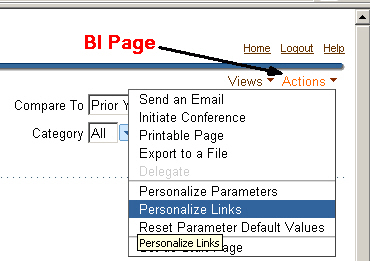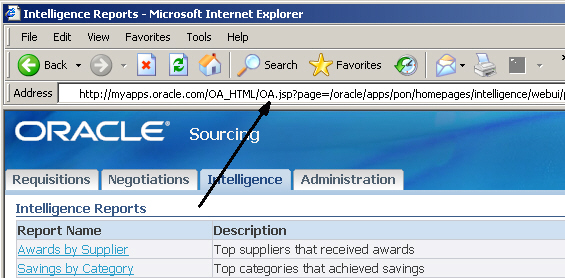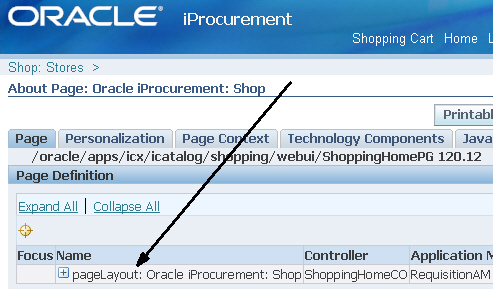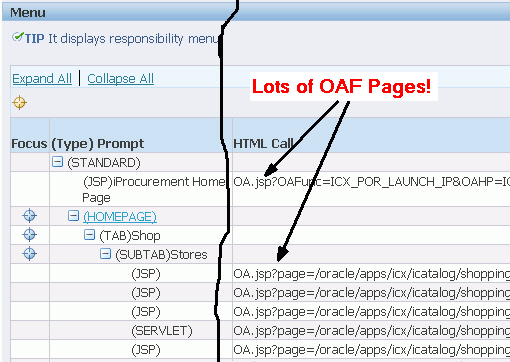Getting Personal with OA Framework Pages
Here are some common questions regarding personalization of E-Business Suite (EBS) HTML-based pages:
"How can we quickly determine if particular E-Biz pages support personalizations?"
First of all, I assume we're talking about the Oracle Application Framework (OAF) Administrator personalization, not Personalized Views (Saved Searches).
All pages built using OA Framework are personalizable by default--the page developer has to do something specific to make the page be non-personalizable. One thing a developer can do to make a page (usually just a region or field) non-personalizable is to set a specific property to false during development. The other is to create regions or fields programmatically (so they don't exist in the page definition that is stored for using with personalizations). These are generally the exception cases.
Some HTML Products Don't Support OAF Personalization
In 11.5.10 (11i), many E-Business Suite CRM products and some other products were built using a different technology stack (JTT/JTF), so they couldn't use OAF personalization. In EBS Release 12, most of these have been rebuilt using OAF.
EBS Business Intelligence products have their own version of personalization, and they do not use the OA Framework feature even though they are built with OAF. Business Intelligence products have somewhat different implementations of their personalization depending on whether you are looking at a dashboard or a report page. But the way to tell if it's a BI page is to look in the upper corners. If you see an Actions dropdown, it's a BI page.
But Which Ones Are Built Using OA Framework?
Sometimes people have trouble telling which pages are created using OA Framework. Here are several ways I use to tell if a page is built using OAF:
The best and easiest way I know of is to look for "OA.jsp" in the URL of the page.
You can also use the About this Page feature to confirm if a page is an OA Framework page. If you don't have it already, you'll need the FND: Diagnostics profile option set to Yes (you may need your administrator to set this). Go to a product page (I'm using iProcurement here) and click on the About this Page link:
If you see that the first line of the page definition is "pageLayout", it's an OAF page.
Beyond looking at each page individually, you can use the About this Page feature to get a whole list of pages built with OAF, all at once. Since you're already there, simply go look at the page context (menu), as follows:
About this Page > Page Context > Menu (Expand All)
Most of the functions in the menu display a URL, so you can see at a glance which ones start with "OA.jsp":
Another way to check for a single page is to use View Page Source in the browser. Early in the source, you will see the following for an OAF page:
You can also list the pages (and more) using the JDR_UTILS package. It is described in the "Inspecting the MDS Repository Content" chapter of the Oracle Application Framework Developer's Guide for your release version (available on MetaLink).
Finally, you can set the "Personalize Self-Service Defn" profile option to Yes to allow personalization, and then look for the Personalize Page link on the top of each page. Of course you can also use the link to see the personalization hierarchy page (or the context page if you are using 11.5.9 up to 11.5.10 CU1--it changed in 11.5.10 CU2).
Note that all of this applies to both Release 11.5.10 and Release 12 of the E-Business Suite. It also applies to EBS 11.5.9 if you applied OAF 11.5.10 to it as part of a patch.
To learn more about OA Framework Personalization, see the Oracle Application Framework Personalization Guide in the Oracle Applications Online Documentation Library.
Here's an Extra Tip: Hidden Fields Between the Fields
Some product teams build features into their pages that are hidden by default because they expect most customers won't use them. These include extra fields for special purposes, hidden Additional Information regions containing descriptive flexfields, and so on. We recommend to product teams that they explicitly document places in their applications where customers are expected to personalize the pages. Check your product's documentation for such updates. I know that iProcurement, at least, mentions such hidden fields directly in the text of their implementation manual. I found one on page 2-17 of the Oracle iProcurement Implementation and Administration Guide, Release 12, Part No. B31402-01. Also, the Oracle Workflow Administrator's Guide and Oracle Workflow User's Guide both have appendices highlighting some of the personalizations for Workflow pages that customers may be most interested in using.
Happy personalizing!
Related
No comments:
Post a Comment